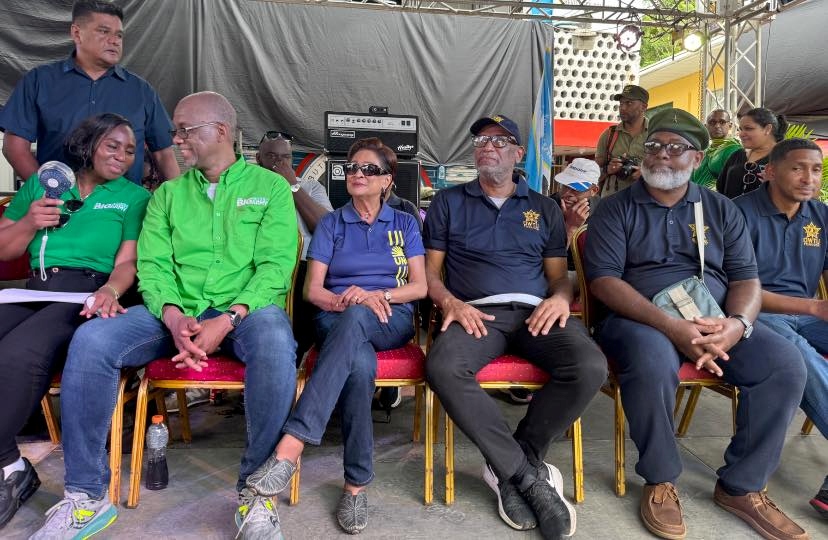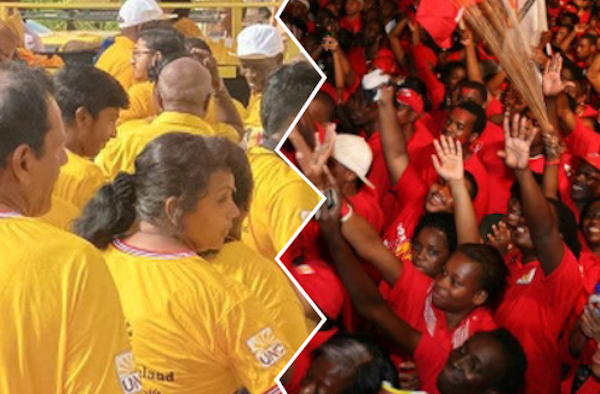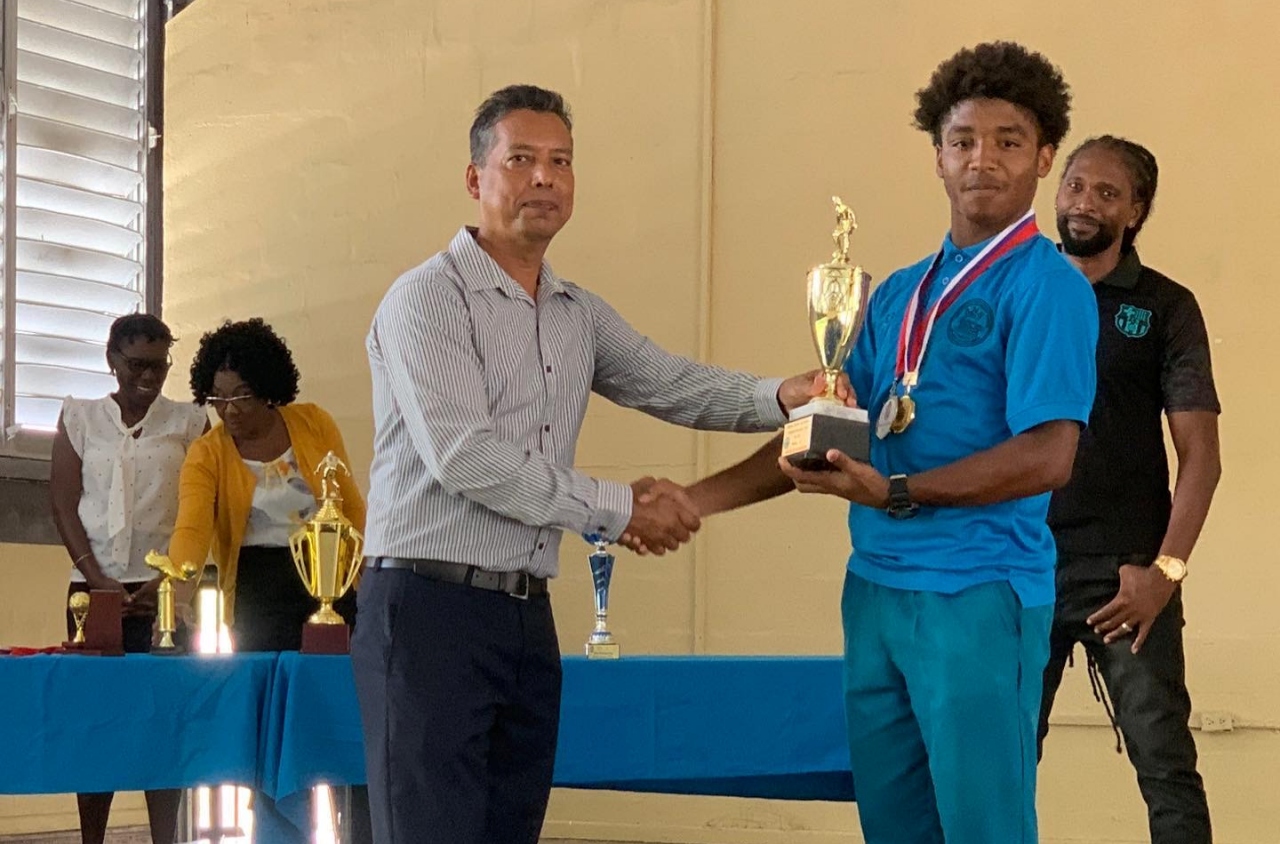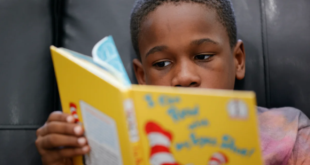In the recent uproar about the viral videos of school fights, the November 2018 prophecy by then Police Commissioner Gary Griffith is forgotten.┬Ā
ŌĆ£It is really important for usŌĆ” to look at secondary school crime preventionŌĆ” If we do not deal with this situation now, in years to come, we will be outnumbered because of what we are seeing with certain young persons in society.ŌĆØ┬Ā
Making the connection with gang leaders, he said: ŌĆ£they are looking up at these individuals [ŌĆ”] seeing them as the Robin Hoods.ŌĆØ┬Ā

(Copyright Newsday)
Are we a people with short attention spans and memories?
Sadly, in Trinidad, we take talk for action. Nothing gets done after the glitzy press conferences. We were promised assignments of over 140 police vehicles in September 2018 and 10,000 police officers in November 2019. Remember when we were told about police covert action in schools?┬Ā
ŌĆ£[ŌĆ”] So the janitor working in the school might be a police officer. It will be a covert operation if you all have ever seen 21 Jump StreetŌĆ”ŌĆØ
That was since April 2019! So this weekŌĆÖs news about police being assigned to schools is ŌĆśold hatŌĆÖŌĆötotally uninteresting.
Dr Keith RowleyŌĆÖs pointing to our societyŌĆÖs history of violence is instructive. Professor Bridget BreretonŌĆÖs 2010 work, The Historical Background to the Culture of Violence in Trinidad and Tobago, traces the journey from the first recorded genocide of the modern times, slavery, which happened in the Caribbean.
According to the planters of Pointe-a-Pierre, flogging was the most humane, prompt and productive mode to crush disorderly behaviour. Being beaten and kicked was routine for the indentured workers.┬Ā

The movie is meant to reflect life in the mid-19th century.
Brereton described the pattern of violence as impulsive and implosive, meaning violent actions of irrational men [and women] wreaking havoc on themselves rather than on the source of their frustrations and oppression. We should pause to think about this description and its applicability to the present-day rage and behaviours.
Power has a way of hiding. Angry men do not reason well.┬Ā
The more things change, the more they remain the same. Professor Brereton makes a striking observation: ŌĆśMany of the urban poor were chronically unemployed, or at best found odd, irregular jobs. The cramped, unsanitary barracks in the towns, especially the colonial capital, with their tiny tenement rooms and teeming open yards, were notorious breeding grounds for crimes of violence and dangerous quarrels.ŌĆÖ┬Ā
Severe corporal punishment of children was a probable legacy of slavery traditions and exaggerated Christian notions of sparing the rod and spoiling the child. Brereton noted that teachers saw themselves as lion-tamers, struggling to keep little savages under control.┬Ā

The older ones among us will recall that corporal punishment in the school system was a staple. Even our sisters pretended to be teachers, complete with a belt to assault their dolls.┬Ā
Hawkim Williams (2013) makes a significant contribution to understanding school violence. He studied an unnamed Senior Comprehensive school. He notes that the discussants focused on the individualistic causes but ignored the structural role of the school.┬Ā
Williams points to the familiesŌĆÖ economic and social challenges. He reminds us that we have almost a fifth of all households living below the poverty line despite a national high per capita income. The schools that receive these troubled children are underfunded and ill-prepared to help those who need the most help.
Many of the teachers are willing participants who seek to improve the well-being of the students, but some are brutally uncaring.┬ĀThose schools are stigmatised, and the students are perceived as useless ŌĆśgarbageŌĆÖ and failures who cannot perform.┬Ā
What do we expect those children to become? So said, so done!┬Ā

When we focus on the direct violence and the youth involved, we miss the violence they received from others and the school system. Power has an uncanny ability to stay in the shadows. ┬Ā
We ignore the impact of trauma on the learning ability of our adolescents, even though it is a reliable predictor of educational outcomes. We subscribe to the myth of ŌĆśpulling yourself up by your bootstraps ŌĆÖ and so cannot find compassion for a traumatised teenager.┬Ā
We do not live in neighbourhoods where you have to drop to the ground or slide under a bed because of gunshots. We have no idea about the drama involved in constantly moving house because of a worsening financial situation or domestic violence eruptions and so find it hard to empathise with the traumatised teen.┬Ā
How does that teen trust an adult? How does the teacher reach out and connect with that child?┬Ā
Calling the police is not the solution. Nance (2016) observes that doing so causes a greater likelihood of continued interaction with the criminal justice system. He noted that the outcomes do not show the desired reformative results. It increases the probability of further involvement in the criminal justice system.

(Copyright Channel4.com)
Is this what we want?┬Ā
Should we not shift the question from ŌĆśwhatŌĆÖs wrong with you?ŌĆÖ to ŌĆśwhat happened to you?ŌĆÖ Can we get behind the behaviour and see what is driving it? Or are we content to update BreretonŌĆÖs observation by substituting the police for teachers? (Remember, teachers can no longer beat children.)┬Ā
Professor Brereton said, ŌĆśthe whip was the teacherŌĆÖs badge of authority in a world where black or brown men and women enjoyed few other forms of prestige or privilegeŌĆÖ. Having been beaten as children, are we still holding to a ŌĆśfirm commitment to physical punishment as a mode of controlŌĆÖ?
The country is experiencing a violent crime wave. We see a surge in murders and assaults but not in many other types of crimes. We see the stresses of Covid via job losses, changed physical home circumstances and sick relatives, yet schools and the relief they traditionally brought have been closed for two years.┬Ā
Instead of being in school, what did we think the teens who live in challenging neighbourhoods were doing? Griffith gave us a clue. The gang leaders were likely recruiting them as look-outs and runners. Domestic violence in the home would have pushed them onto the streets. Hunger would have made them susceptible to predators.┬Ā

After living that life, when they return to school, their gang identity and angry frustrations do not disappear, so fights will potentially happen. Innocent children will also be caught up in a vortex due to bullying.┬Ā
How do we fix this?
Research (Fergus and Noguera, 2010) has shown that, when students feel the staff cares about them, they are more likely to experience academic success. How about funding our schools and supporting our teachers to do better jobs with our troubled youth? How about understanding the complex, non-linear forces that impel violence?┬Ā
Do we desire to collect the necessary data in an inter-disciplinary approach? Or are we happy to let the police do their job of brutalising our young?
How about the nine percenters (along with the one percenters)? What should and can they do? Who are the nine percenters? Those who benefited from our countryŌĆÖs earlier investment in education. They are not the super-rich manipulators, but they have done well and have left their original neighbourhoods behind.┬Ā
They are our professionalsŌĆöthe lawyers, doctors, bankers, etcŌĆöwho are well off and now hide as though they are ŌĆśmiddle-classŌĆÖ. The ones who keep gazing at the one-percenters and scheming to become closer to that group.

(Copyright Ekaterina Bolovtsova from Pexels)
But do they not have more reach and sway in their old haunts? Should they not desire to help the schools they or their parents attended to help others get a leg-up? Should we not do all in our power to save our young people?┬Ā
Are these steps a bridge too far? Will we look in the mirror and see the blind spot right in the middle?

Noble Philip, a retired business executive, is trying to interpret JesusŌĆÖ relationships with the poor and rich among us. A Seeker, not a Saint.
 Wired868 Wired868 for smart sport news and opinion
Wired868 Wired868 for smart sport news and opinion






